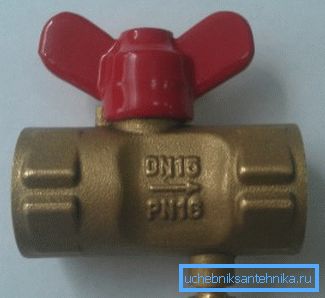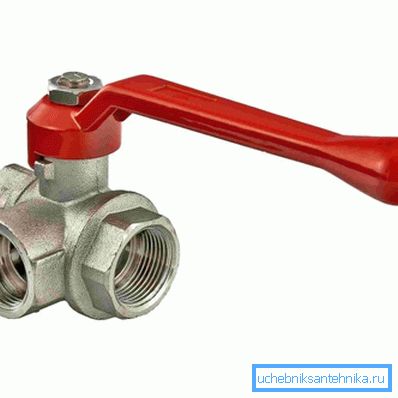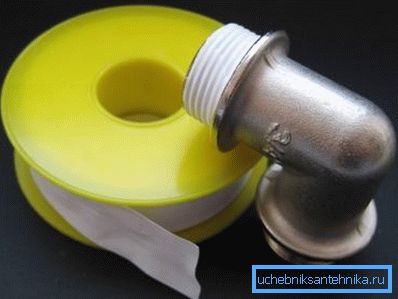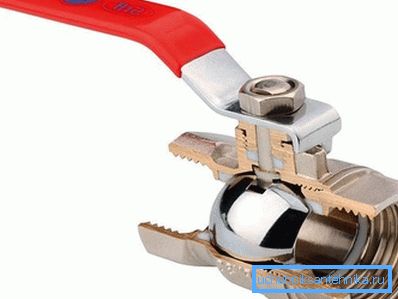Three-way valve for the pressure gauge: purpose, options,
Why do I need a 3 way valve for a pressure gauge? Should it always be installed? In what versions are these devices manufactured? What malfunctions are typical for them? How to seal the threaded connections when installing the crane? Let's try to answer these questions.

Goals
First, find out why a three-way manometric crane is needed at all.
His installation has the following objectives:
- It allows you to calibrate a measuring instrument by connecting a test pressure gauge..
To clarify: of course, in this case, the faucet must have not a drainage tube, but a full-fledged drain with thread or pipe flange for connecting the second device.

- The 3-way valve for the pressure gauge makes it possible not only to disconnect the device from the line, but also to release pressure in front of it. It is believed that this significantly reduces the likelihood of failure (sticking arrows).
- Finally, it allows you to purge the outlet on the pressure gauge - reset through it a certain amount of working medium. During purging, all accumulated impurities are removed from the outlet, which may affect the accuracy of pressure measurement.
Is it possible to get along with a conventional through-flow coupling valve? In industrial conditions, where constant pressure control is necessary to comply with the production technology, in pumping and on gas pipelines - no. Incorrect readings can cost too much.
In the heating system of a private house or in the elevator unit of an apartment manometer, it is usually connected to an ordinary control valve. Actually, in elevators the pressure gauge is often installed only at the time of taking control readings: as long as there is free access to technical basements, the problem of equipment theft remains relevant.
Execution options
How can a three-way valve for a 1: 2 inch gauge be arranged? We give several descriptions of the most common designs.
Cork tension
Cork three-way valve with tension sealing 11b18bk is available in the following configurations:
- Two pipe (DN 15) or metric (M20x1.5) threads and drainage hole.

- One pipe and one metric thread plus drainage hole.
- The same, but with the handle (lever or butterfly).
- Two threads (DN 15, M20x1.5, or a combination thereof) and a flange for connecting a test pressure gauge.
The valve is extremely simple in design, but has a couple of significant drawbacks:
- Quite a big switching effort (typical, however, for all cork valves).
- The constant risk of tearing off the liner plug when tightening the nut. Brass is a rather soft metal, and too much effort is not required here.
The principle of operation of the three-way valve for the pressure gauge is simple and clear: the T-shaped cut-out in the rotating tube, when it is turned, is combined with one or two taps.
Accordingly, the following configurations are available in different positions:
- The outlet is plugged, the pressure gauge is connected to the atmosphere through a drainage or flange.
- Pressure is applied to the check valve with the drain or flange closed.
- The tap is working on a reset when the gauge is off.
Sharovy with drainage
As a sample, we consider a three-way ball valve for a 11B27p pressure gauge. It is interesting in the implementation of drainage. In essence, we have an ordinary coupling valve with an elongated body and a drainage hole on one side of the stop ball.

We give the characteristics of the product.
| Parameter | Value |
| Maximum working pressure | 16 atmospheres |
| Maximum working temperature | For water - 140С, for steam - 225С |
| Body material and ball | Brass |
| Seal material for stem and seat | PTFE |
| Drainage | Hole in the housing with screw-plug |
| Wholesale price | 180 rubles |
Please note: in such an implementation, a three-way ball valve for a pressure gauge is rather inconvenient in hot water and heating. Unscrew the drainage screw obdast your hand with boiling water.
Sharovy with muftovy branch
An ordinary three-way coupling valve can also be used as a pressure gauge valve. An example of such a product is Valtec VT361N.

The material of the body and the ball of the product is chrome-plated brass; seals are made of teflon. The maximum working temperature of the environment is +150 degrees. Noteworthy is the manufacturer's declared durability of the product - at least 20,000 cycles.
Installation
How to seal the threaded connections of valves and pressure gauges when installing them by hand?
The instruction, in general, is quite standard:
- On gas mains used tape FUM. Threads are twisted by hand or with a tool, but with a minimum effort.

Pay attention: the tape FUM perfectly seals the pipe thread, but it leaks even with its minimum reverse course.
- For hot and cold water it is better to use a polymeric sealing thread (TangitUnilok and analogues). In its absence, a good result is provided by sanitary linen, soaked in any quick-drying paint, sealant or linseed oil.
Service
The list of faults of cranes that can be self-remedied is more than small.
- Leaking when the cork valve is closed means insufficient pressure or debris that has fallen under the cork. Disassemble the valve, wipe the plug and seat and reassemble it. The nut on the shank should be tightened only if the leak persists after cleaning.
- A leak on the rod of the ball valve indicates the development of a sealing ring. If the valve has a pinch nut, it can be tightened one to two turns.

If the seal is pressed with the handle and the washer laid under it - with the valve closed, remove them and place several turns of FUM tape over the seal.
Conclusion
We will consider our acquaintance with a relatively exotic type of valves and fittings held. The video in this article will traditionally offer the reader additional thematic information. Successes!